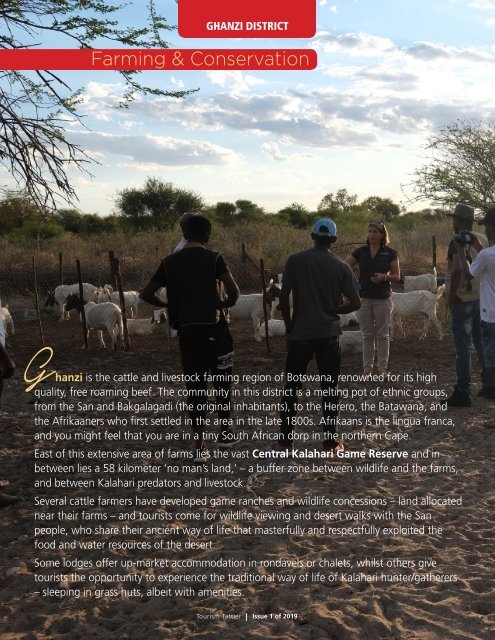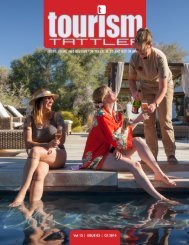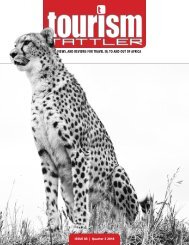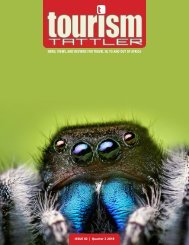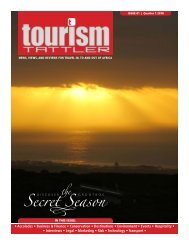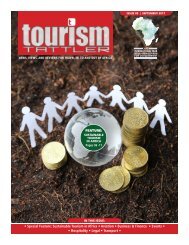Tourism Tattler Issue 1 2019
Botswana is renown as a safari destination. That’s a well-known fact. Lesser known, and yet, more appealing facts, lie on the far side of Botswana Tourism’s popular attractions. In this edition, we explore the diversity of tourism attractions that abound along a route extending over 2000 km from the capital city of Gabarone in the Southern District, through the Ghanzi District to Gchwihaba Caves, into Ngamiland Districts’ famous Okavango Delta, and ending in Botswana’s far Northern District of Chobe where the country butts up against Namibia, Zambia, and Zimbabwe at Kasane.
Botswana is renown as a safari destination. That’s a well-known fact. Lesser known, and yet, more appealing facts, lie on the far side of Botswana Tourism’s popular attractions.
In this edition, we explore the diversity of tourism attractions that abound along a route extending over 2000 km from the capital city of Gabarone in the Southern District, through the Ghanzi District to Gchwihaba Caves, into Ngamiland Districts’ famous Okavango Delta, and ending in Botswana’s far
Northern District of Chobe where the country butts up against Namibia, Zambia, and Zimbabwe at Kasane.
You also want an ePaper? Increase the reach of your titles
YUMPU automatically turns print PDFs into web optimized ePapers that Google loves.
GHANZI DISTRICT<br />
Farming & Conservation<br />
Ghanzi is the cattle and livestock farming region of Botswana, renowned for its high<br />
quality, free roaming beef. The community in this district is a melting pot of ethnic groups,<br />
from the San and Bakgalagadi (the original inhabitants), to the Herero, the Batawana, and<br />
the Afrikaaners who first settled in the area in the late 1800s. Afrikaans is the lingua franca,<br />
and you might feel that you are in a tiny South African dorp in the northern Cape.<br />
East of this extensive area of farms lies the vast Central Kalahari Game Reserve and in<br />
between lies a 58 kilometer ‘no man’s land,’ – a buffer zone between wildlife and the farms,<br />
and between Kalahari predators and livestock.<br />
Several cattle farmers have developed game ranches and wildlife concessions – land allocated<br />
near their farms – and tourists come for wildlife viewing and desert walks with the San<br />
people, who share their ancient way of life that masterfully and respectfully exploited the<br />
food and water resources of the desert.<br />
Some lodges offer up-market accommodation in rondavels or chalets, whilst others give<br />
tourists the opportunity to experience the traditional way of life of Kalahari hunter/gatherers<br />
– sleeping in grass huts, albeit with amenities.<br />
<strong>Tourism</strong> <strong>Tattler</strong><br />
<strong>Issue</strong> 1 of <strong>2019</strong>


